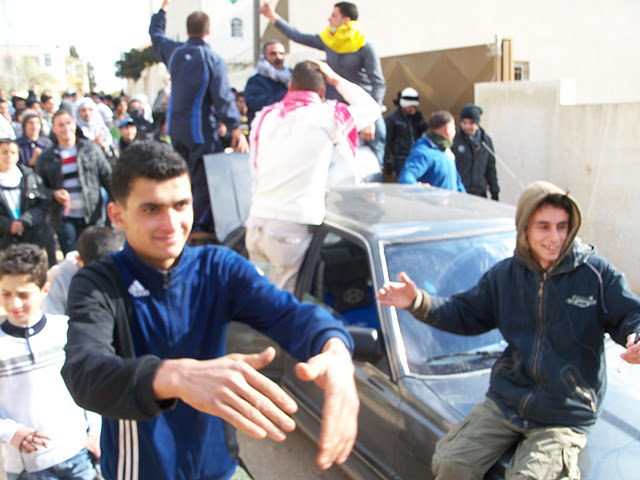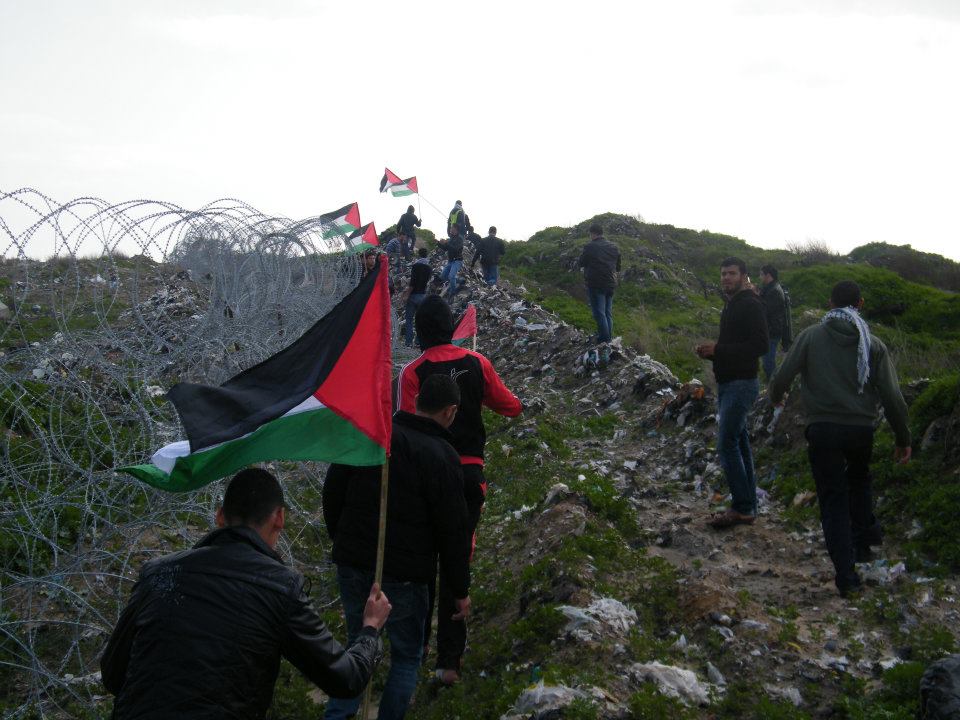-
Kufr Qaddoum drives back Israeli soldiers at weekly demonstration to re-open road
by Aaron 21 January 2012 | International Solidarity Movement, West Bank The mood was celebratory following the weekly protest this Friday in Kufr Qaddoum, after demonstrators succeeded in pushing back Israeli soldiers for the second week in a row. The goal of the protest was to open the main road to regional population center of […]
-
George Orwell meets Mel Brooks in detention of international activist
by Jack English 20 January 2012 | International Solidarity Movement, West Bank The ongoing repression of international activists took a turn for the ridiculous on Thursday night in Al Khalil, also known as Hebron. At approximately 7:30pm on January 19th, an activist approached a military checkpoint en route to his apartment, where two soldiers on duty, […]
-
Further into the No Go Zone
by Nathan Stuckey 19 January 2012 Every Tuesday we gather next to the half destroyed Beit Hanoun Agricultural College. At eleven o’clock, we set out into the no go zone. This week there were about thirty of us, members of the Beit Hanoun Local Initiative, the International Solidarity Movement, and other activists from Gaza. At […]
Action Alert An Nabi Saleh Apartheid Wall Arrests BDS Bethlehem Bil'in Cast Lead Demonstration Denial of Entry Ethnic Cleansing Farmers Gaza Global Actions Hebron House Demolition International law Israeli Army Jerusalem Live Ammunition Nablus Ni'lin Prisoner Ramallah Rubber-coated steel bullets Settlement Settlers Settler violence Tear-Gas Canister Video


